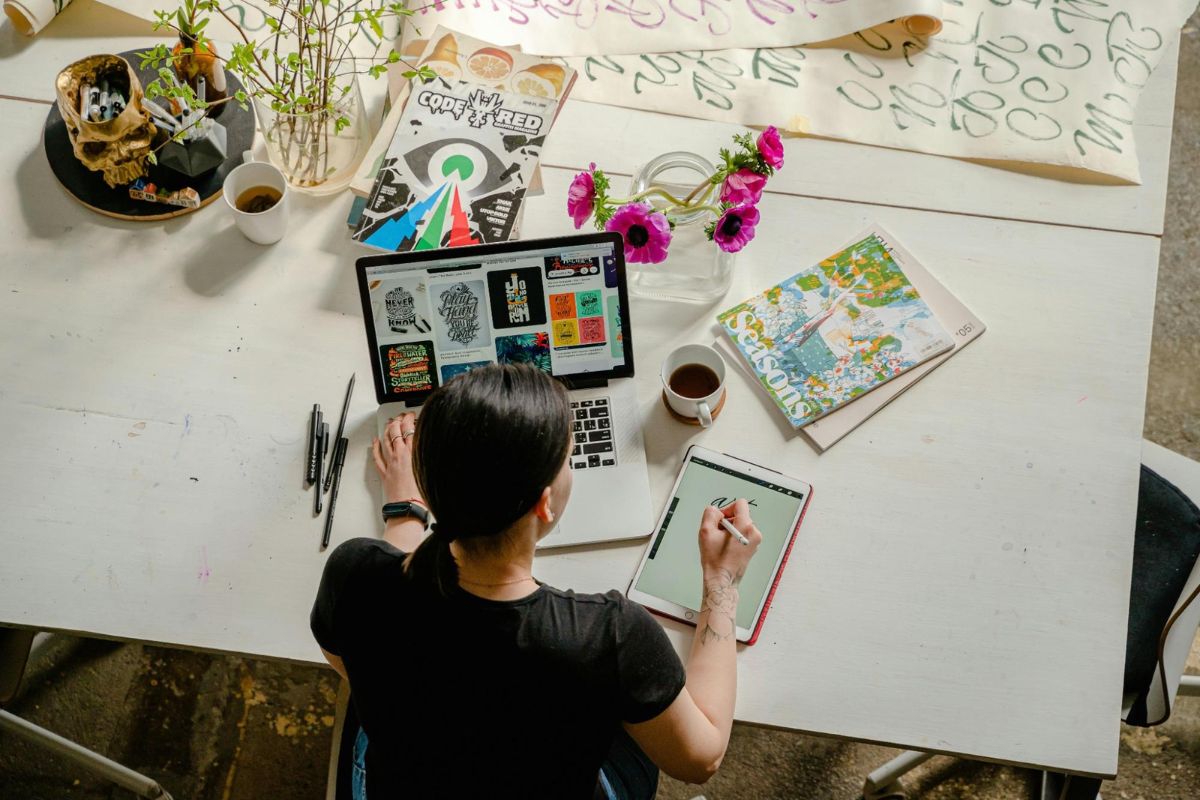If you’ve ever felt like your creative juices have stopped flowing, you’ve likely looked in the most unexpected of places before even considering using artificial intelligence.
Some creatives look at AI as the enemy, while others see it as an ally.
Although there has been much heated debate surrounding the ethical use of generative AI for creativity, it’s entirely possible to find a middle ground.
Do you work in the creative field, or are you thinking about pursuing a passion project of your own? AI and creativity can bond in ways that bring your ideas to the next level.
What is Generative AI?
Generative AI is like your creative sidekick—an advanced tool that can generate content, images, music, and more based on patterns it’s learned from tons of data.
With AI-generated visuals becoming more prevalent, tools like AI Image Detector help differentiate between human-created and AI-generated images, ensuring authenticity in creative projects.
Think of it as a digital brainstorm buddy: you give it some prompts, and it whips up new ideas or suggestions that can get your creativity flowing.
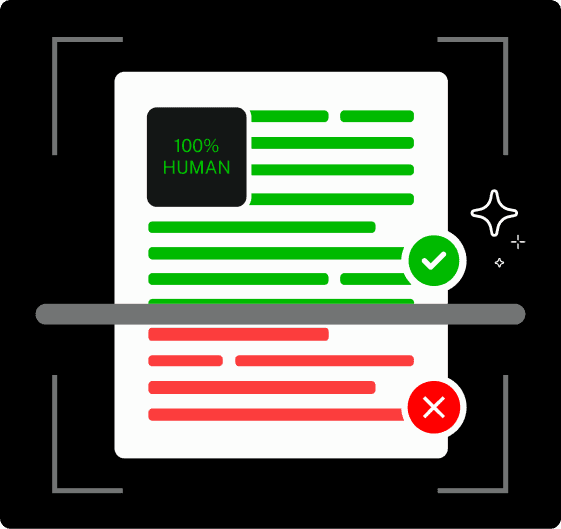
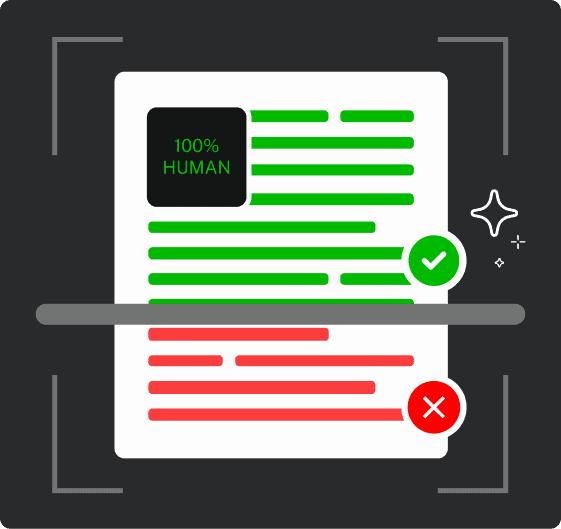
Never Worry About AI Detecting Your Texts Again. Undetectable AI Can Help You:
- Make your AI assisted writing appear human-like.
- Bypass all major AI detection tools with just one click.
- Use AI safely and confidently in school and work.
Whether it’s drafting text, designing visuals, or even composing music, generative AI takes what it knows and helps you build on it, making the creative process faster, more fun, and packed with possibilities.
Can AI Be Creative? Here’s the Truth
The concept of creativity is such an innate human attribute that it’s no surprise that there’s been so much contention surrounding AI involvement.
If we move past the talk about the ethical and privacy issues, there’s another question we should ask, and that is: can artificial intelligence be creative?
Can a robot emulate the inner workings of the human mind to produce riveting visuals or narratives?
Creativity is so intensely human that it’s practically impossible for AI to reproduce that level of emotional depth.
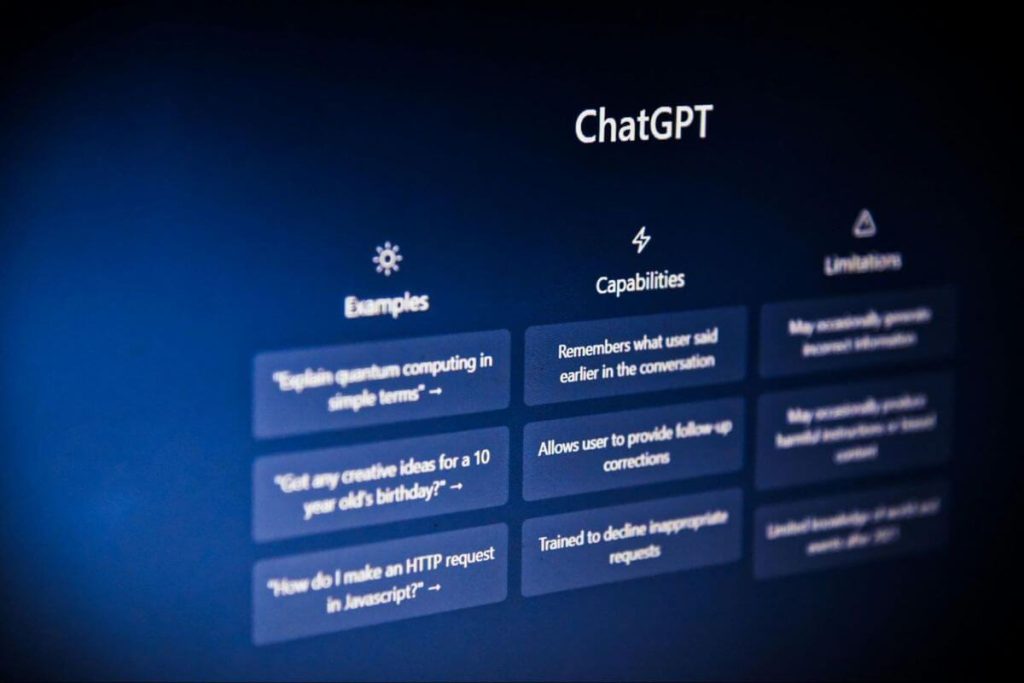
While AI can enhance creativity alongside humans, it needs some human intervention and cannot be creative on its own.
That’s why AI is very much unlikely to ever replace human artists.
Within the artistic realm, humans place serious value on human-made visual art, novels, and other mediums because of their nuanced human touch.
AI relies on algorithms, programming, and data to function – it’s a human-created tool that can be deployed in many ways as long as it’s guided by a real person in the right way.
When visionaries begin to see AI through the fog, it’s a tool that projects out what you put into it, and you can use it in intelligent ways to craft something extraordinary.
Skeptics are right – AI isn’t creative in the human sense of the word, but when it’s guided by a creative, it can transform our process in ways that we’ve never thought of before.
The Best Use Cases of AI In Creativity
Generative AI has boldly made its entrance into many of our lives.
This technology can craft new ideas from pieces of initial data, figure out solutions to our creative problems, and guide us through an inspiration drought.
We’ve meshed our inherent creativity with AI and found ways to bring AI into valuable play. Here’s where:
Online Content Creation:
AI tools have revolutionized content creation, making it easier to produce high-quality videos, write compelling articles, and even generate captions effortlessly. ShortCap, for example, enhances video accessibility and engagement through automated subtitles, ensuring that audiences stay hooked effortlessly.
There are two ways AI can be creative in the online content creation world – by generating content itself or going the informative route.
While creators can utilize AI to produce catchy headers or effective descriptions, it can also prompt ideas for appealing posts or provide guidelines for full-on digital marketing campaigns.
AI can also move away from the generative approach and assist with social media management and similar processes.
It could handle content scheduling and search engine optimization and ensure your content makes an impact and produces the right benefits for you in return.
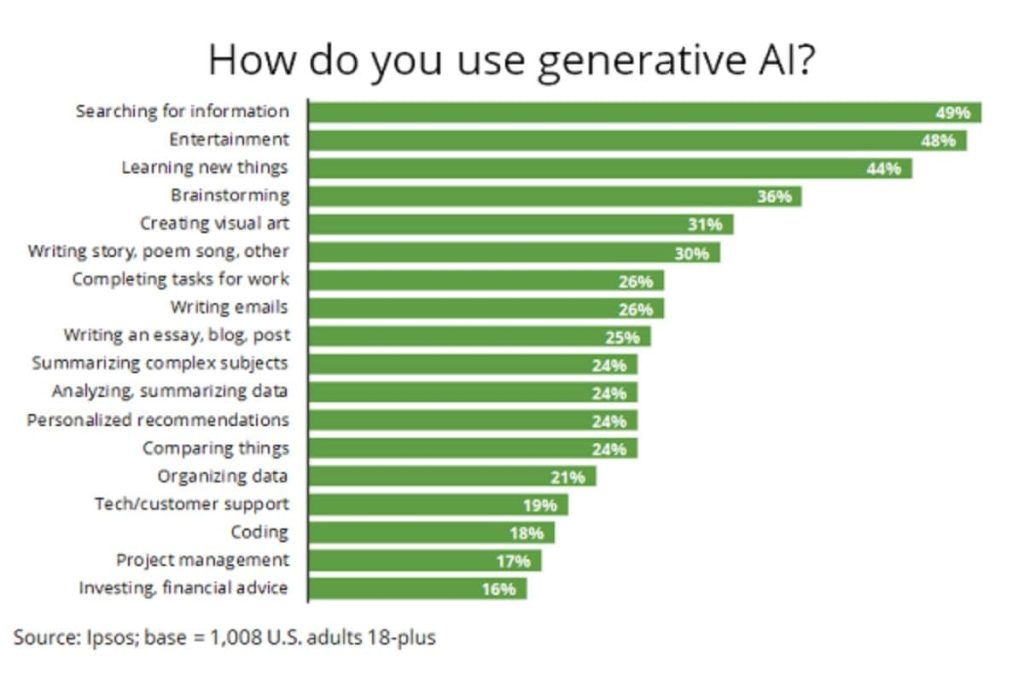
Digital Art:
The visual art sphere is where AI has really shown its propensity for “creativity.”
These AI-generative art tools are trained on large datasets of images rather than the text datasets that other generative AI tools are based on.
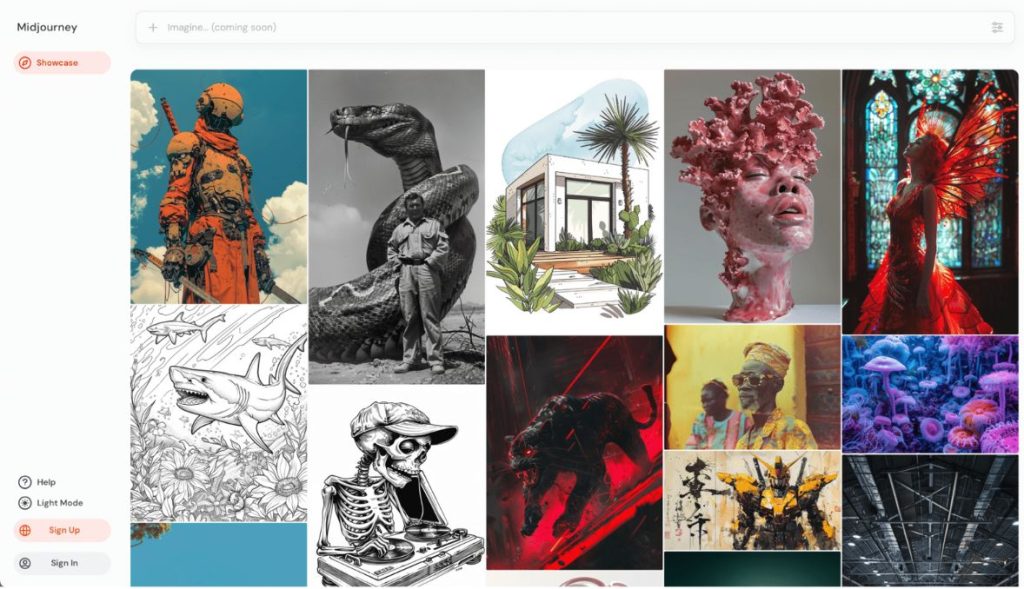
In some cases, some models will combine the two to provide more context or specificity to the output.
But just like how text programs like ChatGPT aren’t able to capture the nuances of human-written content, AI art tools like Midjourney can’t truly produce an original or authentic piece.
Regardless of those limitations, artists can harness AI for its ability to deliver a fresh perspective or remove creative barriers.
Music Composition:
A much newer domain than visual art and text generation, we’re slowly seeing AI music tools like Suno and MuseNet crop up.
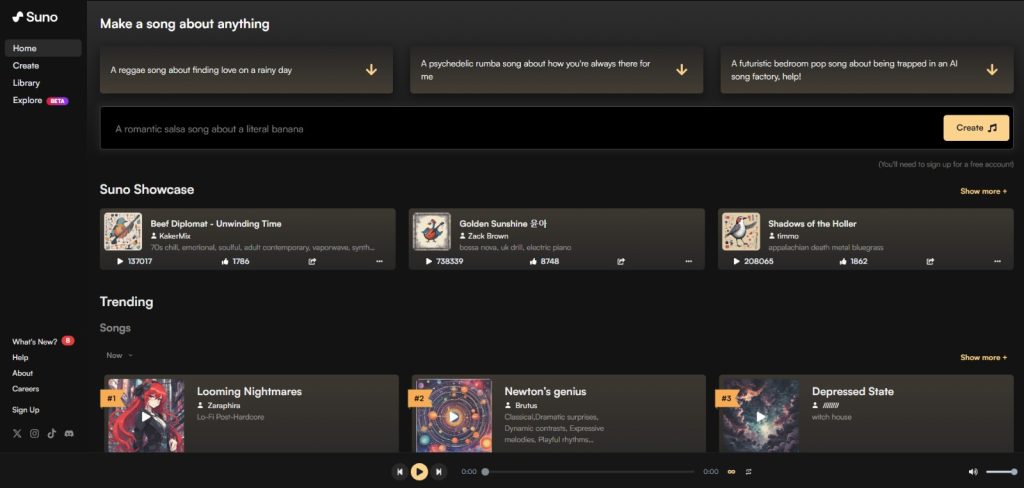
That means animators and other video-based creators who aren’t musically savvy can seamlessly create the ideal song for whatever purpose they need using AI over instruments.
Again, there’s nothing like hearing a talented jazz guitarist riff for half an hour minutes or the cohesion of a seasoned band – but AI is a fantastic solution that makes music more accessible.
If you want to learn more about the AI, check out the music transfer tool and an article about AI in the music industry.
Academics:
We were once limited to library books and desktop computers to conduct research, then we progressed to smartphones and Siri – but with AI, that labor-intensive process has been cut down tenfold.
Instead of spending hours finding the perfect source, students of all ages can use AI to sift through millions – potentially billions – of articles.
Although most tools require fact-checking, they significantly reduce time and effort and create a potentially richer academic research experience.
There are certainly pros and cons for education, especially if left unmonitored, but overall, it’s a positive shift towards AI.
Freelance Writing:
The first use case of generative AI was to aid writers – of all sorts – in their craft.
Grammarly, formerly a simple proofreading tool, has now become an AI tool that analyzes text and offers relevant suggestions and improvements in your preferred writing style.
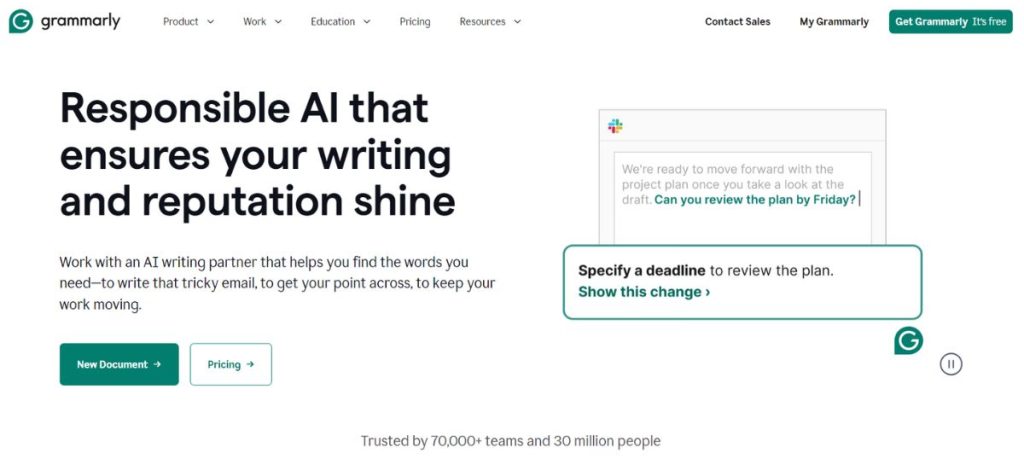
These AI writing tools expedite the creative process, jump-starting it with innovative ideas and then refining them into engaging content.
Beyond the creative process, AI can tackle the more pragmatic aspects of writing as well, such as plagiarism and search engine optimization.
Undetectable AI is one such tool that takes AI-written distinctions into consideration, offering an advanced AI detector and humanizer all in one.
When you’re ready to verify your content for AI-written content, all you have to do is copy and paste your text into the box and click “Check for AI.”
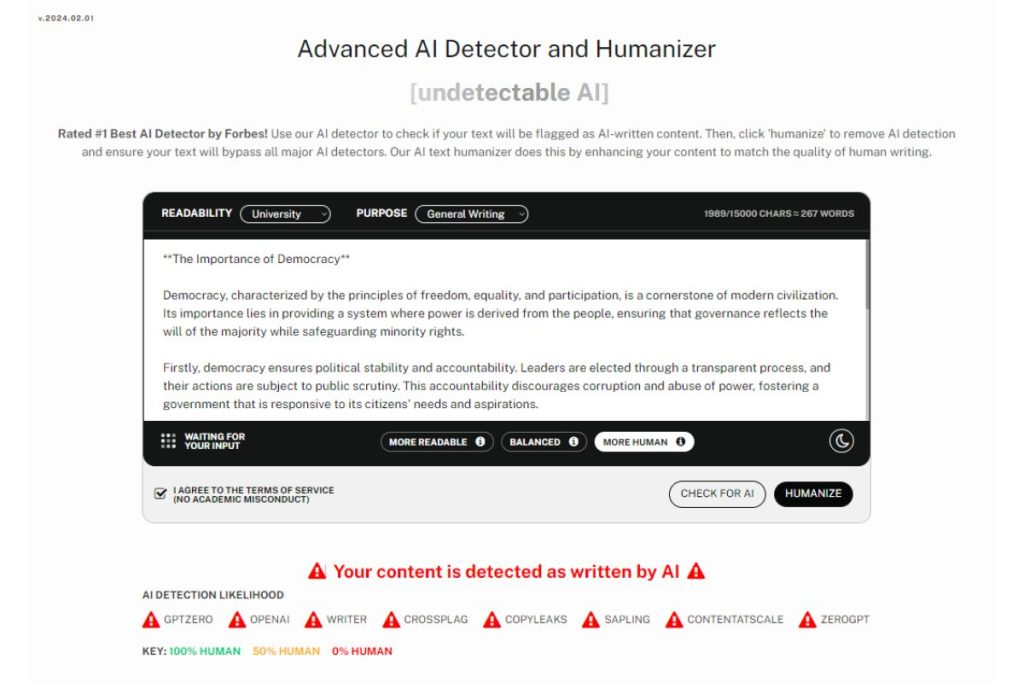
Undetectable will then show you the likelihood of AI detection from the web’s top AI detectors.
If the tool detects AI-generated content, you can click the “Humanize” button to make your text virtually undetectable.
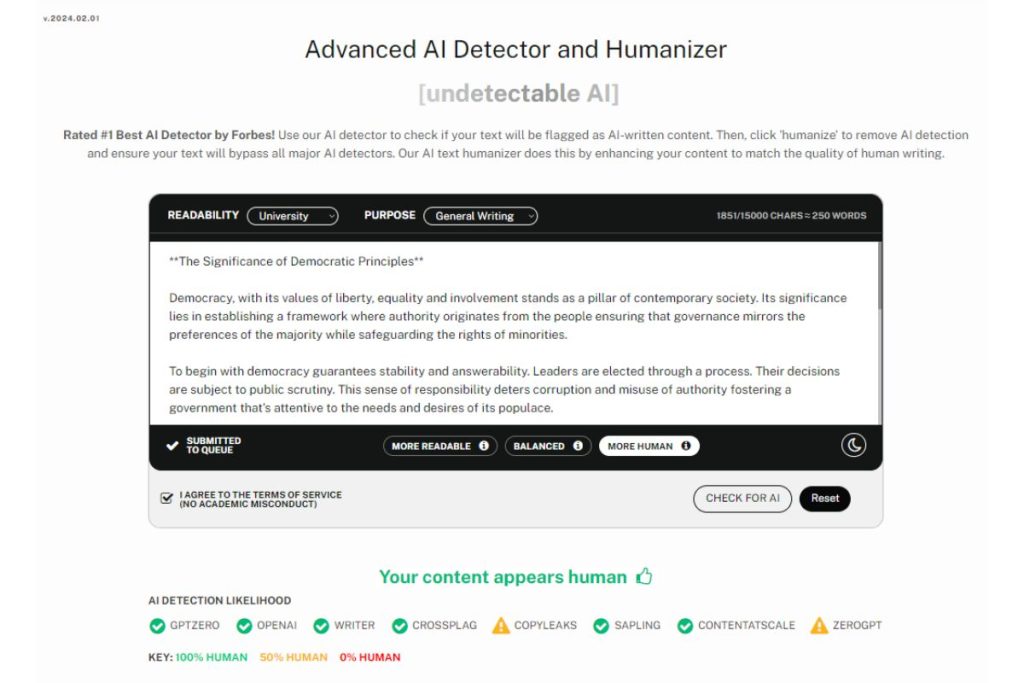
How Generative AI Can Enhance Human Creativity
AI used to primarily serve as an assistant, helping with data collection, streamlining workflows, or supporting industry-specific applications.
With generative AI, however, it has now evolved into a creator in its own right.
The Shift to Collaboration with AI
Society has shifted in the way we work and play. It’s not that we’ve destroyed human creativity; it’s that we’ve found a way to perform creativity with AI.
When AI first began to emerge, there were plenty of negative opinions and emotions, fearing that AI would compete with humans.
Since then, most of us have found a healthy way to get AI to complement our abilities, not trump them.
AI tools typically work to expand what we’re capable of and often serve as a base for more complicated tasks.
If a musician is having trouble with a section of a composition or a writer is struggling to think of the right word for a sentence, AI can step in to make room for the more important aspects of the creative process.
Expansion of Creative Boundaries
The most exciting part of embracing AI in this manner is that humans can now expand their creative boundaries.
Although it’s easy to think that the human brain and its capabilities are limitless, we experience confinement through our personal experiences, current situations, and inner biases.
While AI has bias too, by working with it, you can often mitigate and cancel out each other’s biases, especially if you are conscious of them.
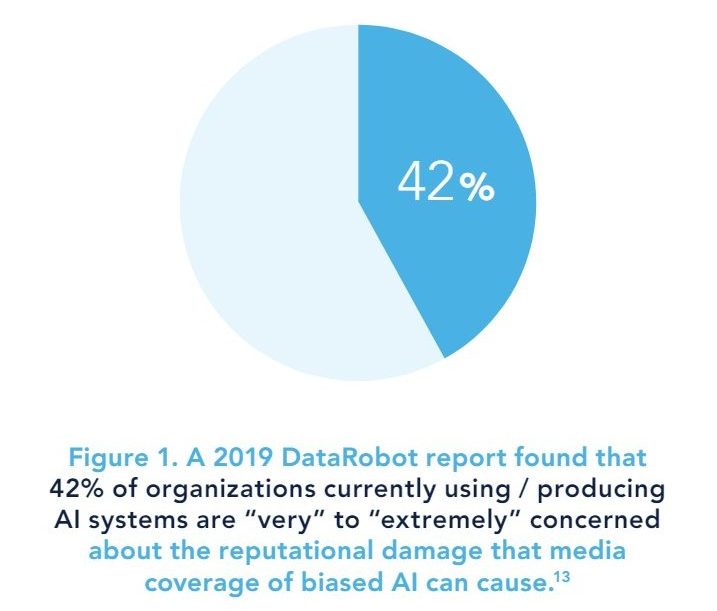
Once programmed, AI operates well outside ourselves, which means it can generate all sorts of imaginative and unexpected ideas that we wouldn’t necessarily jump to.
Ever heard of the phrase “a second pair of eyes” or “additional brainpower”?
AI can essentially step in and be those things and, in turn, break down those boundaries that we’re so accustomed to being restricted to.
FAQ’s
Can AI Come Up with New Ideas?
Yes, AI can generate ideas that feel new, but it operates within the boundaries of its programming and training data. It creates by interpreting and combining patterns from the information it has learned, allowing it to produce fresh designs or content.
Does Technology Limit Creativity?
Technology can sometimes impose constraints, like standardizing certain processes or tools, but it often expands creative possibilities rather than limiting them. With access to advanced tools and vast resources, technology allows creators to explore new ideas and experiment in ways that weren’t possible before.
How Generative AI is Changing Creative Work?
Generative AI is reshaping creative fields by speeding up workflows in content creation, design, music, and more. It generates fresh ideas, overcomes creative blocks, and helps explore new styles by acting as a collaborative “partner.”
Conclusion
AI’s role in creative processes has become so advanced that it’s able to confuse us, shock us, and have us question what’s human-made and what’s not.
But when we turn this fear and uncertainty into curiosity, we’re able to use AI as a real driver in our creative endeavors.
The rule of thumb? To stay open-minded, adaptable, and welcoming to the possibilities that are sure to come.
AI-generated content is making waves, enhancing efficiency and allowing creativity.
However, it’s crucial to maintain the human touch that resonates with audiences. Undetectable AI offers a simple solution to humanize your AI-generated content, ensuring it feels authentic and goes undetected.
Begin transforming your AI content with Undetectable AI for free today and elevate your creativity. Use the widget below and see the difference (English only)!
